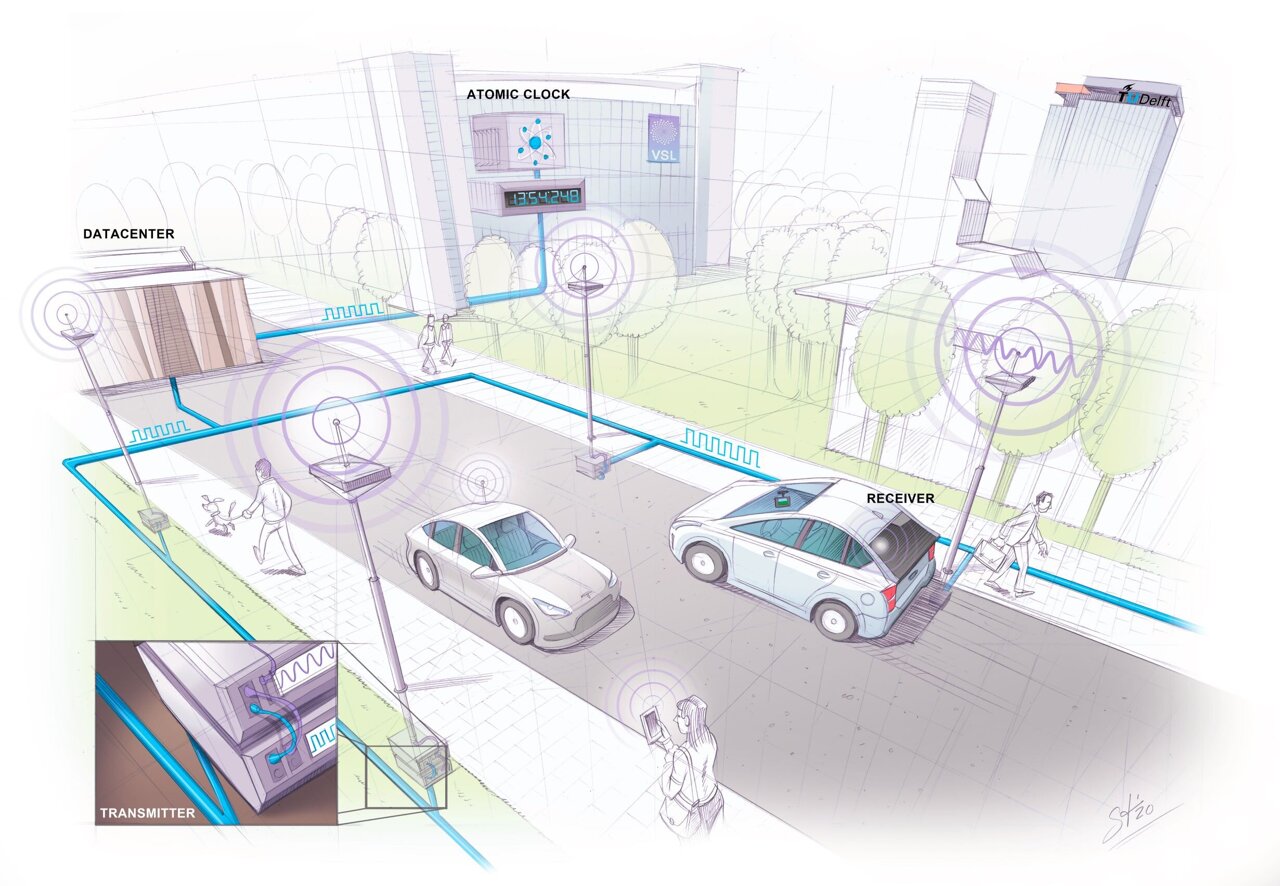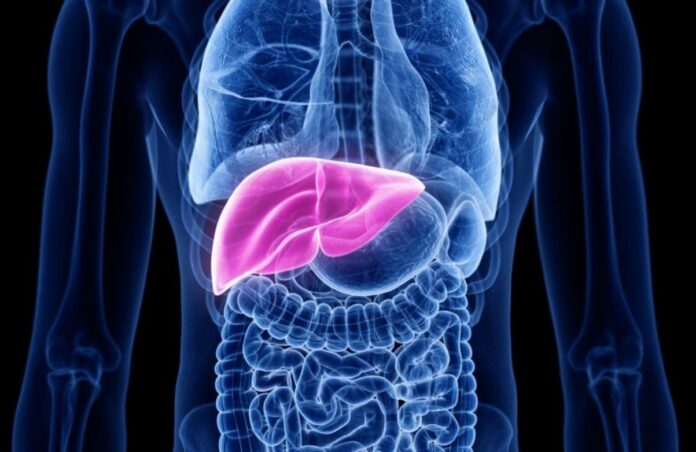
via Delft University of Technology
Researchers of Vrije Universiteit Amsterdam, Delft University of Technology and VSL have developed an alternative positioning system that is more robust and accurate than GPS, especially in urban settings. The working prototype that demonstrated this new mobile network infrastructure achieved an accuracy of 10 centimeter.
This new technology is important for the implementation of a range of location-based applications, including automated vehicles, quantum communication and next-generation mobile communication systems. The results were published in Nature today.
A lot of our vital infrastructure relies on global navigation satellite systems such as the US GPS and EU Galileo. Yet these systems that rely on satellites have their limitations and vulnerabilities. Their radio signals are weak when received on Earth, and accurate positioning is no longer possible if the radio signals are reflected or blocked by buildings. “This can make GPS unreliable in urban settings, for instance”, says Christiaan Tiberius of Delft University of Technology and coordinator of the project, “which is a problem if we ever want to use automated vehicles. Also, citizens and our authorities actually depend on GPS for many location-based applications and navigation devices. Furthermore, so far we had no back-up system.”
The aim of the project entitled SuperGPS was to develop an alternative positioning system that makes use of the mobile telecommunication network instead of satellites and that could be more robust and accurate than GPS. ‘We realized that with a few cutting-edge innovations, the telecommunication network could be transformed into a very accurate alternative positioning system that is independent of GPS”, says physicist Jeroen Koelemeij of VU Amsterdam. “We have succeeded and have successfully developed a system that can provide connectivity just like existing mobile and Wi-Fi networks do, as well as accurate positioning and time distribution like GPS.”
An atomic clock
One of these innovations is to connect the mobile network to a very accurate atomic clock, so that it can broadcast perfectly timed messages for positioning, just like GPS satellites do with the help of the atomic clocks they carry on board. These connections are made through the existing fiber-optic network. “We had already been investigating techniques to distribute the national time produced by our atomic clocks to users elsewhere through the telecommunication network”, says Erik Dierikx of VSL. “With these techniques we can turn the network into a nationwide distributed atomic clock – with many new applications such as very accurate positioning through mobile networks. With the hybrid optical-wireless system that we have demonstrated now, in principle anyone can have wireless access to the national time produced at VSL. It basically forms an extremely accurate radio clock that is good to one billionth of a second.”
Furthermore, the system employs radio signals with a bandwidth much larger than commonly used. “Buildings reflect radio signals, which can confuse navigation devices. The large bandwidth of our system helps sorting out these confusing signal reflections, and enables higher positioning accuracy”, Gerard Janssen of Delft University of Technology explains. “At the same time, bandwidth within the radio spectrum is scarce and therefore expensive. We circumvent this by using a number of related small bandwidth radio signals spread over a large virtual bandwidth. This has the advantage that only a small fraction of the virtual bandwidth is actually used and the signals can be very similar to those of mobile phones.”
Original Article: A navigation system with 10 centimeter accuracy
More from: VU University Amsterdam | Delft University of Technology
The Latest Updates from Bing News
Go deeper with Bing News on:
Alternative positioning system
- Why Russian jamming threatens to dampen Tartu’s year of celebration
GPS jamming in the Baltic has led to all flights to Tartu in Estonia being cancelled. With Russia the likely culprit, Baltic foreign ministers are demanding NATO take action.
- Mekhi Wingo embodies the traits of the ideal Detroit Lions player
Despite his size and draft selection, Mekhi Wingo embodies the characteristics of who the Detroit Lions look for in their players ...
- The Eco-Friendly Power of the Fiskars Weed Puller: A Tested Review
By positioning the claws directly over the center of the weed and then stepping down on that platform, I was able to drive the claws deeply into the weed’s root system. The serrated claws gripped the ...
- First Look: The New Leupold RX-5000 Laser Rangefinder
The new Leupold RX-5000 TBR/W is a laser rangefinder that can also drop pins on your favorite mapping software.
- Freakishly large graphics cards and super-hot SSDs mean the fundamentals of PC design needs a big change
ATX (Advanced Technology Extended) is a motherboard and power supply configuration specification introduced by Intel in 1995. Its purpose is to define the basic fundamentals of our PCs. If you look at ...
Go deeper with Bing News on:
SuperGPS
- Super Evolution Codes (May 2024)
Danilo Grbović is an esteemed code writer for GAMURS and a recognized authority in the gaming world. His status as a certified weeb is backed by extensive knowledge and expertise in anime ...
- Super PACs
Super PACs are a relatively new type of committee that arose following the July 2010 federal court decision in a case known as SpeechNow.org v. Federal Election Commission. Technically known as ...
- Super Tuesday 2024 Primary Election Results
Voters in 16 states and one territory headed to the polls in the largest contest so far in the 2024 presidential primary. One state, Alaska, held only a Republican contest. And Iowa and American ...
- Super League Soccer codes April 2024
April 28, 2024: We’re struggling to get into the Super League Soccer socials to check for new codes. We’ll add an updated Discord link here when it’s available. What are the new Super League ...
- Best bike GPS trackers 2024
The best bike GPS trackers increase your chances of being reunited with a stolen bike, by broadcasting its location back to you once you've flagged it as lost. There are two main ways in which GPS ...










